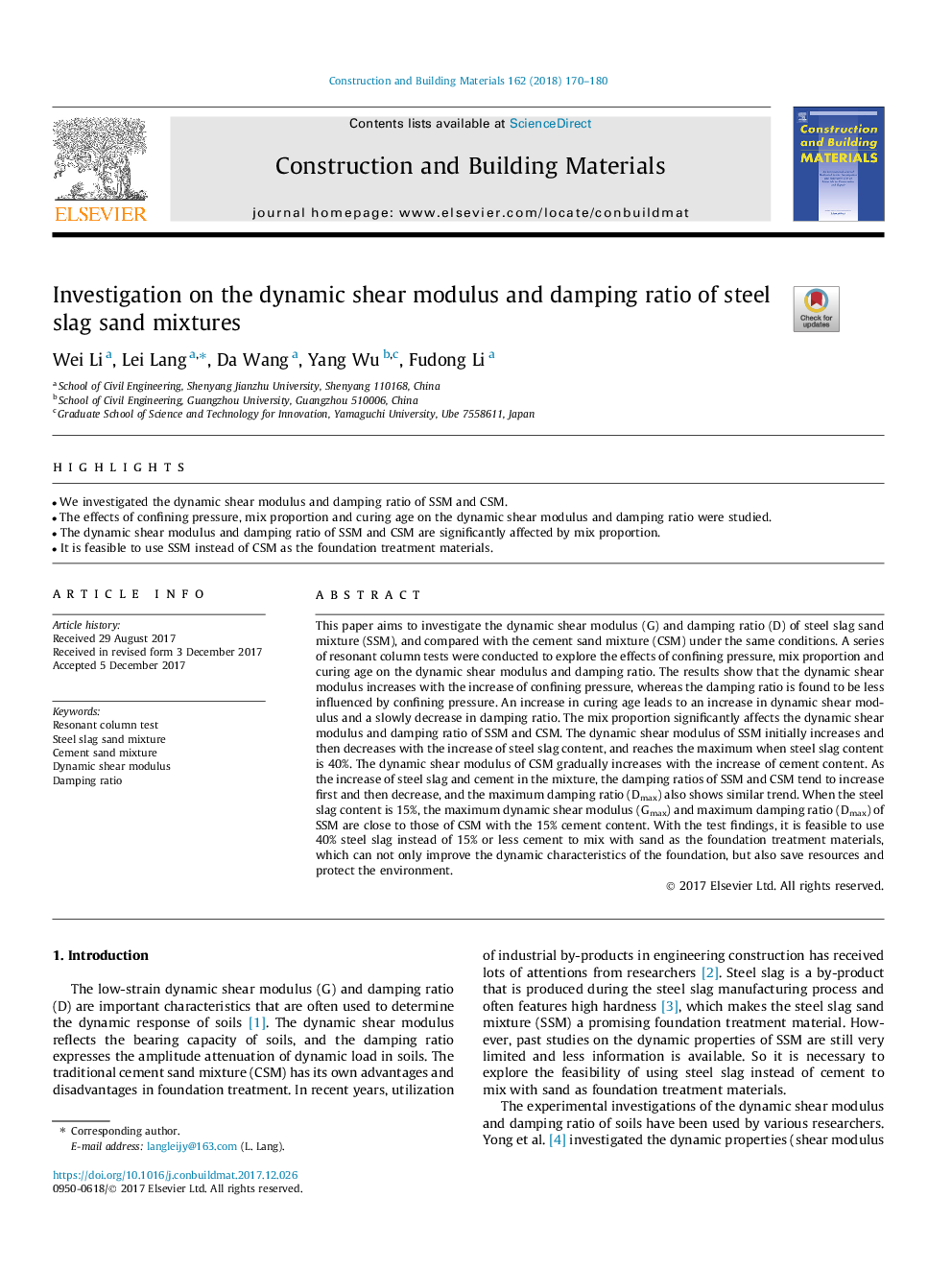| Article ID | Journal | Published Year | Pages | File Type |
|---|---|---|---|---|
| 6716443 | Construction and Building Materials | 2018 | 11 Pages |
Abstract
This paper aims to investigate the dynamic shear modulus (G) and damping ratio (D) of steel slag sand mixture (SSM), and compared with the cement sand mixture (CSM) under the same conditions. A series of resonant column tests were conducted to explore the effects of confining pressure, mix proportion and curing age on the dynamic shear modulus and damping ratio. The results show that the dynamic shear modulus increases with the increase of confining pressure, whereas the damping ratio is found to be less influenced by confining pressure. An increase in curing age leads to an increase in dynamic shear modulus and a slowly decrease in damping ratio. The mix proportion significantly affects the dynamic shear modulus and damping ratio of SSM and CSM. The dynamic shear modulus of SSM initially increases and then decreases with the increase of steel slag content, and reaches the maximum when steel slag content is 40%. The dynamic shear modulus of CSM gradually increases with the increase of cement content. As the increase of steel slag and cement in the mixture, the damping ratios of SSM and CSM tend to increase first and then decrease, and the maximum damping ratio (Dmax) also shows similar trend. When the steel slag content is 15%, the maximum dynamic shear modulus (Gmax) and maximum damping ratio (Dmax) of SSM are close to those of CSM with the 15% cement content. With the test findings, it is feasible to use 40% steel slag instead of 15% or less cement to mix with sand as the foundation treatment materials, which can not only improve the dynamic characteristics of the foundation, but also save resources and protect the environment.
Related Topics
Physical Sciences and Engineering
Engineering
Civil and Structural Engineering
Authors
Wei Li, Lei Lang, Da Wang, Yang Wu, Fudong Li,
